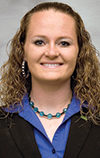“Transportation means different things to different people. There are over 125,000 head of cattle on the road every day, and that's just slaughter capacity. That doesn't include normal transportation. That is a big part of our industry,” said Lisa Pederson, North Dakota State University.
The Cattle Transportation Symposium – held in Fort Collins, Colorado, May 14-15 – covered many different topics, including how stress affects cattle, the condition of animals being shipped and being prepared for difficult situations when hauling cattle.
Dr. Karen Schwartzkopf-Genswein, who is from Canada, talked about the methods of assessing and reducing stress associated with transportation in cattle.
“If an animal does not go to feed immediately and it wants to lay down, that indicates that the animal is fatigued. If an animal is stressed, it won’t ruminate,” she stated.
She explained that fat cattle are the hardiest in transport, with feeders and cull cows being more vulnerable. “Cull cows have the greatest probability of poor welfare outcomes, and have more welfare issues when transported,” she said.
She continued, “What gets put on the trailer is really dependent on the outcome later. Even the best transporters and conditions cannot compensate for poor loading decisions.”
Transportation also includes the loading and unloading of cattle, which can be a very stressful time. “There are plenty of educational materials to teach people how to handle cattle. We each need to do a better job, in each segment, of training people. It's in our best interest to do a better job,” said Larry Schnell, Stockman's Livestock Exchange, Dickinson, North Dakota.

Handling continued to be a big topic of conversation throughout the conference. “We need to stress low-stress handling and create the tools to do it. We have to create the culture where it's OK not to feel like you are in a hurry. Labor is an issue in feedyards. We are chronically short. You want to hurry to get to where you are going to get home. We need to take the time to make sure that we do it right,” said Dr. Daniel Frese.
He continued, “Sometimes cattle have to walk more than a mile from one end of the yard to the loading area before being loaded out. We need to look at the management issue of having fat pens near the loading area.”
The condition of animals that are shipped was another topic, including the problem with shipping unsound animals. “I owe them respect and dignity, and for them to be treated poorly in their last days, I don't appreciate that. If it is not sound, you don't want to put them on a truck. They go directly to slaughter. If we didn't have that option, they would stay on the farm until they would be able to be transported,” said Jon Slutsky, owner of La Luna Dairy near Wellington, Colorado.
Jeff Johnson, president of Out West Trucking, gave producers tips on hauling during difficult situations. “Our goal is to keep the cattle as comfortable as we can before they ship, while being loaded, while being transported and once they get to the plant,” he said.
He talked about loading cattle early in the morning so there is no heat stress, bedding down trucks for long distance hauls so it is more comfortable, drivers knowing their route so they can pull off if needed and having a plan in place in case of a wreck.
Other topics included principles of proper cattle transportation, research on hauling, an auction market’s perspective on hauling, different trailer types, understanding regulatory expectations with packers, information about the Canadian Livestock Transportation Certification Program, stock trailer inspections and cattle trailer designs. ![]()
The Cattle Transportation Symposium, hosted by the National Cattlemen’s Beef Association, the Beef Checkoff, Colorado State University and Beef Quality Assurance, was held at the CSU Agricultural Research, Development and Education Center (ARDEC) in Fort Collins, Colorado, May 14-15.
PHOTO 1: Dennis Sands, vice president of sales and marketing for Merritt Equipment Co., talks about the differences in fat cattle trailers in terms of design.
PHOTO 2: Understanding the loading capacity was part of the discussion on trailers and transportation. Photos by Robyn Scherer.








